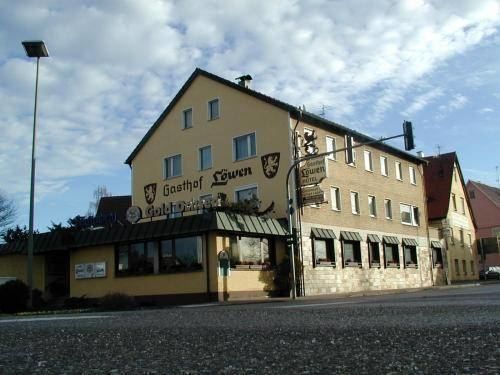Admin. region Stuttgart Elevation 364 m (1,194 ft) Area 12.78 km² Local time Tuesday 4:08 PM Dialling code 07162 | Time zone CET/CEST (UTC+1/+2) Population 10,057 (31 Dec 2008) Postal code 73079 Administrative region Stuttgart | |
 | ||
Weather 14°C, Wind NW at 10 km/h, 50% Humidity | ||
Süßen (or Süssen) is a town in the district of Göppingen in Baden-Württemberg in southern Germany. It is located on the river Fils 8 km east of Göppingen, near Stuttgart.
Contents
- Map of SC3BCC39Fen Germany
- History
- Religions
- Population
- Coat of arms and flag
- Partnerships
- Local council
- Events
- Buildings
- References
Map of S%C3%BC%C3%9Fen, Germany
History
Süßen was first mentioned with the name of Siezun in the Lorsch codex in 1071. Großsüßen (Greater Süßen) was at first in the possession of the count of Helfenstein, who, in 1382 pledged it to the city of Ulm. Kleinsüßen (Smaller Süßen), on the other hand, was in the hands of the family Pappenheim. They inherited the land forward to the landlords of Bubenhofen.
In frames of the Mediatization in 1802, Großsüßen was given to Bavaria but in 1810 the lands were given back, in frames of an exchange contract to Württemberg. Kleinsüßen was on the other hand never Bavarian land. After the exchange, both places, Groß- and Kleinsüßen were assigned under the Head Office of Geislingen.
With the opening of the Fils Valley Railway and Süßen station in 1847, Kleinsüßen was connected to the public transportation.
In 1933, the two townships, Großsüßen and Kleinsüßen were unified and the settlement Süßen was formed. The war reform in 1938 assigned the town to the region of Göppingen.
On July 1, 1996, Süßen obtained the title of town.
Religions
In 1539 Protestantism was officially introduced in Großsüßen, being part of Ulm. Kleinsüßen, owned by the Pappenheims, remained Roman Catholic.
Population
The development of the population
Coat of arms and flag
The official coat of arms contains a black-white part and three red zig-zag lines. This shield became the official coat of arms in 1933. The red zig-zag lines represent the landlords of Bubenhofen, the former land owners. The black-white part represents the connections to Ulm. The red-white flag of the town was given on 13. March 1958 by the Ministry of Internal Affairs.
Partnerships
Süßen is a partner town of the Hungarian Törökbálint. This connection was established, when on 26. February 1946 the first Hungarian-Germans (266 of them) arrived from Törökbálint to Süßen, chased away by the Hungarian communists and the arriving Soviets.
Local council
The local council in Süßen has 18 members. The elections in Baden-Württemberg 25.5.2014 had the following results. The Gemeinderat is the elected Gemeinderäte and the mayor as chairman.
